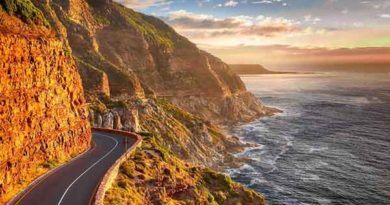News on Kangaroos and an Australia Atlas of Nature

Kangaroos are classic, endemic fauna of Australia, adored by many worldwide. Some locals, however, consider them as pests.
Kangaroos have become iconic poster children for Australia’s great outback. But although the kangaroo is a national emblem for the country, some locals also think of the marsupial as a nuisance. Kangaroos often frequent grasslands and other open areas, such as farmlands, creating the perception that they compete with livestock for food—even though there is no research proving that the diets of kangaroos decrease survival of Australian cattle and sheep. In fact, one study concludes that removal of kangaroos is unlikely to significantly improve farmland quality for livestock.
Urban kangaroos, such as those in the capital city of Canberra, get into trouble with people, too. Hopping across streets, the animals are a frequent traffic hazard. And it’s been reported that one family discovered a confused and panicked kangaroo in a bedroom after it had leapt through a window and bounded around the house until it was thrust out the front door.
New research with kangaroos, however, just might give these animals some added cred as intelligent beings that deserve a bit more respect and tolerance. Scientists now say kangaroos can intentionally communicate with humans, challenging the notion that this sort of behavior is restricted to domesticated animals, such as dogs, goats or horses. And there’s more good news from Australia: the country has become a leader in providing public access to information on its fauna, flora and natural environment.

Climate change will lead to reduced rainfall in parts of Australia, as well as increased temperatures. These fluctuations, along with other existing threats, could cause kangaroos to be eliminated from parts of their current ranges.
Kangaroo communication
Anyone who has ever had dogs as pets knows that they can communicate a lot with their eyes. You know the “treat routine”: your dog knows where you keep the tasty morsels; and if she thinks that she deserves one, she’ll gaze steadily at you, then look at the treat container and then back at you. Her gaze tells you exactly what you’re supposed to do.
Now, a new study reveals that kangaroos—animals that have never been domesticated—surprisingly act the same way with humans.
With the help of 11 kangaroos at three locations in Australia—the Australian Reptile Park, the Kangaroo Protection Co-Operative and the WILD LIFE Sydney Zoo—researchers learned that kangaroos would stare at a human when trying to access food which had been put in a closed box. The kangaroos used gazes to communicate with the human instead of attempting to open the box themselves, a behavior that is usually expected only of domesticated animals.

In a recent study, kangaroos gazed at a human in order to indicate that they wanted access to food that had been placed in a closed box—rather than try to open the container themselves.
Ten out of the 11 kangaroos tested actively looked at the person who had put the food in the box to get it (this type of experiment is known as “the unsolvable problem task”). Nine of the 11 kangaroos additionally showed gaze alternations between the box and the person present, which is considered a heightened form of communication.
This research builds on previous work that looked at whether intentional communication with nonhuman animals is a result of domestication. Scientists had established that goats can understand human cues, including pointing, to gather information about their environment. Similar to dogs and goats, kangaroos are social animals; and this new study suggests they may be able to adapt their usual social behaviors to interact with humans.
The scientists conclude that communication between human and nonhuman animals can be learned and that the behavior of gazing at people to access food is not related to domestication.

Rising dramatically from the central Australian desert, the huge, red rock of Uluru is one of Australia’s most widely recognized natural wonders. This sandstone monolith is about half a billion years old.
What’s most exciting to me is that this study also shows that the potential for referential, intentional communication with humans by nonhuman animals—domesticated or wild—has been gravely underestimated.
Australia’s amazing atlas
But the kangaroo study isn’t the only news to come out of Australia recently.
Australia’s unique and highly endemic flora and fauna—such as kangaroos—are threatened by rapid losses in biodiversity and degrading ecosystem health, caused by environmental challenges and human influence. But biodiversity researchers, policy-makers and resource managers often don’t have access to the necessary information to tackle these problems. Data, then, can be a powerful tool for decision-making and science development, and this is where the Atlas of Living Australia (ALA) comes in.

Endemic koalas serve as ambassadors for the Australian bush. Protecting them also safeguards the habitats of a wide range of other animal and plant species. Koalas have special significance for Aboriginal Australians, who feature them in art and stories.
The ALA—Australia’s national biodiversity database—uses cutting-edge digital tools, enabling people to access, analyze and share facts about local animals, fungi and plants. It brings millions of sightings and environmental findings, such as those on rainfall and temperature, together in one place to be searched and investigated. All of the data is publicly available.
The ALA currently contains nearly 95 million occurrence records of more than 111,000 species, the earliest of them from the late 1600s. The atlas also encompasses information on animal tracking, biodiversity projects, indigenous ecological knowledge, specimens, taxonomic profiles and Australia’s Natural History Collections. Thousands more records are added daily. A forum paper recently published in the open-access, peer-reviewed Biodiversity Data Journal details its history, current state and future directions.
The ALA now delivers data and related services to more than 80,000 users every year, helping environmental planners, industry, scientists and the general public to work together more efficiently. It also supports the international community as the Australian section of the Global Biodiversity Information Facility and is the code base for the successful international Living Atlases community.

Red-tailed black-cockatoos are natives of Australia and found in all mainland states. The birds reside in a variety of habitats, especially forests and woodlands dominated by casuarinas or eucalypti. They also live in some cities and towns.
Recognizing the potential value of citizen science, the ALA became a member of the iNaturalist Network in 2019. Projects such as BioCollect, a platform with 524 citizen science projects, and DigiVol, a volunteer portal where more than 6,000 public volunteers have transcribed more than 800,000 specimen labels and 124,000 pages of field notes, were also born from ALA’s interest in empowering citizen science.
Availability, accessibility and attitudes
Together with its partner tools, the Atlas of Living Australia has radically enhanced access to biodiversity data. Highly regarded both domestically and internationally, it has built a national community that is working to improve the availability and accessibility of biodiversity data.

The Great Ocean Road, on Australia’s National Heritage List, is a 151-mile stretch along the southeastern coast between the cities of Torquay and Allansford. It carries you close to pristine rain forests, misty waterfalls, spectacular surf breaks and native wildlife.
My hope is that more nature atlases from more places and added attention to the Atlas of Living Australia will make more of us recognize the cognitive abilities of the animals with whom we share the world—such as kangaroos—and help foster more positive attitudes towards all beings.
Here’s to finding your true places and natural habitats,
Candy
About the author: Candice Gaukel Andrews View all posts by Candice Gaukel Andrews
A multiple award-winning author and writer specializing in nature-travel topics and environmental issues, Candice has traveled around the world, from the Arctic Circle to Antarctica, and from New Zealand to Scotland’s far northern, remote regions. Her assignments have been equally diverse, from covering Alaska’s Yukon Quest dogsled race to writing a history of the Galapagos Islands to describing and photographing the national snow-sculpting competition in her home state of Wisconsin.
In addition to being a five-time book author, Candice’s work has also appeared in several national and international publications, such as “The Huffington Post” and “Outside Magazine Online.” To read her web columns and see samples of her nature photography, visit her website at www.candiceandrews.com and like her Nature Traveler Facebook page at www.facebook.com/naturetraveler.




